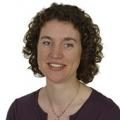Welcome to the seventh issue of Science in School Editorial article

Editor of Science in School
Matthias Wilmanns studies development, not of the embryo, but of a disease: tuberculosis, caused by the bacterium Mycobacterium tuberculosis. Once nearly eradicated, this potentially fatal disease is now on the increase. Matthias and his team are searching for a cure using modern molecular biology tools.
Even more worrying than disease is the question of climate change. In response to readers’ suggestions, we asked climate researcher Rasmus Benestad to write us a two-part article. In this issue, he discusses the evidence of climate change; in the next issue, he will consider the impact of humans on the Earth’s climate.
In the latest article in our popular ‘Fusion in the Universe’ series, Henri Boffin looks way beyond the Earth’s atmosphere to consider gamma-ray bursts. You may notice the increasing power of this series: in the last issue, we talked about supernovas, ‘one of the most powerful events in the Universe since the Big Bang’. This time, we go a step further. First detected in 1967, gamma-ray bursts are – not one of the most – but the most powerful events since the Big Bang.
From the heavens to the depths of the oceans: Vikki Gunn’s Classroom@Sea project involved a few lucky science teachers in a multidisciplinary research cruise. Together, the teachers and research scientists have produced an archive of information and teaching materials for those of us left at home.
While I sadly couldn’t join Vikki’s cruise, I was lucky enough to be invited to Serbia, where I visited the Petnica Science Center. Created by students and young scientists, this wonderful organisation brings together enthusiastic school students, university students and teachers from across Europe to discover the joy and fascination of science. In his article, Srdjan Verbic introduces Petnica and its many programmes.
Our teacher profile in this issue also comes from outside the EU. Prize-winning Ukrainian biology teacher Halyna Yagenska tells Sai Pathmanathan about memorable moments in her career and describes the network she and other Ukrainian teachers have established to swap ideas and materials.
Science in School aims to encourage communication between teachers, scientists and everyone else involved in European science education. Until now, we have done this by publishing articles in which teachers, scientists and others share their scientific knowledge, teaching experience and project ideas. We are also keen, however, to encourage direct contact between our readers – across national and subject boundaries.
For this purpose, we have added a discussion forum to the Science in School website. Here, you can ask other readers for advice or collaboration, or offer your own tips. For example, a teacher in Poland may be searching for teachers in Portugal or Ireland to join an international project. Or if a Spanish science teacher needs advice about teaching a difficult topic, perhaps a Dutch teacher can help. To get the discussion started, I have added a topic about school visits to science museums. Do add your own museum recommendations or start a new discussion topic.
Another exciting change to our website is you can now download – free of charge – all Nature articles that we cite in Science in School. We are grateful to Nature Publishing Group for supporting the European teaching community in this way, and hope that other publishers will allow us to make their articles available in the same way.
The number of translated articles on our website is increasing steadily. Italian, Spanish and Greek are particularly well represented, but we have articles in 25 languages. If you would like more articles online in your native language, you might like to either translate some yourself, or encourage others to help. Translation guidelines are available online.
Finally, why not consider submitting your own article to Science in School? See our online author guidelines, or ask us for advice.





